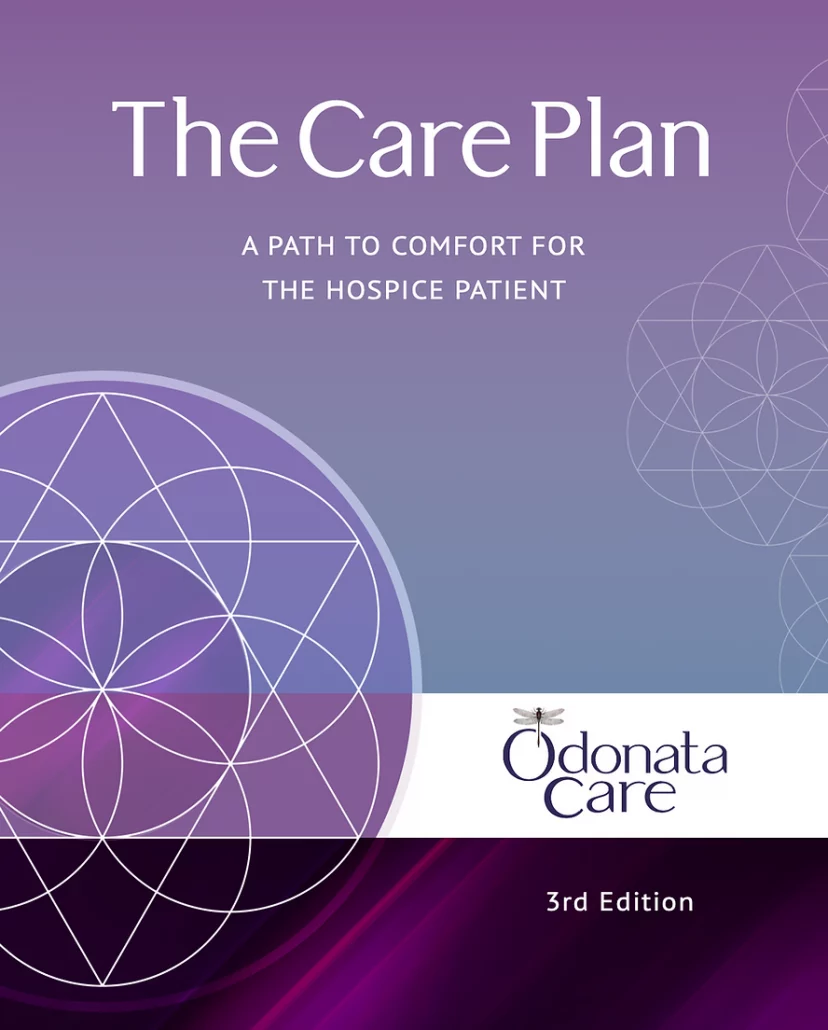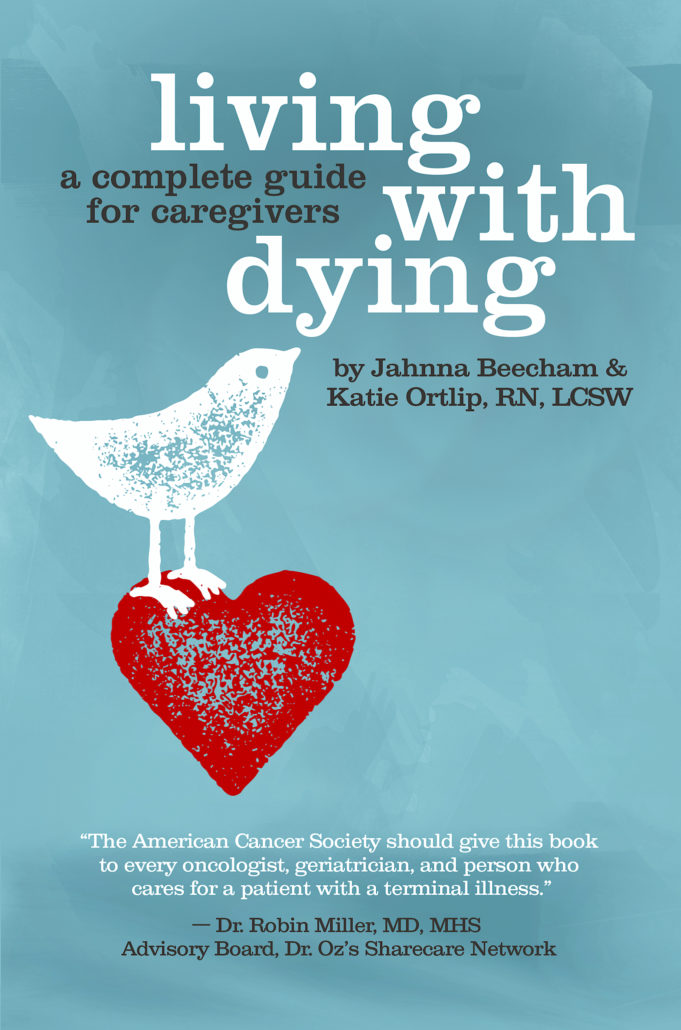Recommended Recourses

Brenda Kizzire and Nancy Heyerman, two nationally accredited Certified Hospice and Palliative Nurses have the website Odonata Care. https://www.odonatacare.com/ This site has Care and Safety videos as well as their booklet The Care Plan, a great guide for caring for you loved one at home.

By Johnna Beecham & Katie Ortlip, LCSW (2016). Living with Dying, A Complete Guide for Caregivers. Starcatcher Press, Ashland, Oregon http://livingwithdying.com/. You can purchase the book on their website and find other helpful information. It truly is “a complete guide for caregivers”.
The Environment
The surroundings can bring comfort and relaxation to the patient. Familiar objects associated with meaningful memories, with family, friends, accomplishments and general autonomy. Patients want their immediate environment to feel like home and often like to arrange their belonging and mementos around their bed in just the particular manor that suits them. A recent study looked at the belongings taken into a hospice by patients and found that patients had an average of 5.7 objects at their bedside, and in most cases, these included items which were of great personal significance to them (Kellehear, Pugh, & Atter, 2009).
In addition to have familiar objects nearby, creating a beautiful and comfortable space is important. This can vary from person to person, so ask when them possible, and follow their wishes as closely as possible.
Things that make an environment comforting
- Support privacy when needed
- Support social interaction including space for visitors to sit by the bedside
- Provide views of nature and sunlight
- •Dim lights if there is light sensitivity
- Play soft music (music enjoyed by the patient)
- Provide good smells from flowers, cooking food, or a candle
- Circulate air with an electric fan or open window
- Support spirituality by creating a sacred space
Food and Water
Need for food and water changes during illness and end stage disease. Your doctor should be consulted when questions about nutritional needs come up.
Often, when the natural dying process begins, the body’s systems begin to shut down, causing the need for food and fluids to decrease. It is often recommended at this time, to let the patient lead and not force food or water. Family members often have difficulty accepting this change, “as food and water represent sustenance and survival.” The primary concern should be comfort at this stage. The body is undergoing such a major metamorphosis internally. We as caregivers must understand the body’s needs have little resemblance to what they were before.
We seek to be attuned to, and respond to, the unique needs of the moment at hand. The goal is to keep the patient as comfortable as possible.
Helpful Things You Can Do
- Offer food and drink, but do not force it.
- Offer food that doesn’t require chewing
- Encourage them to eat and drink slowly and offer small amounts
- Soft foods like pudding, gelatin, apple sauce, ice cream and protein drinks are often good choices
- Assist them to sit upright while eating or drinking or offer a lidded sip cup or a dropper to decrease choking
- Offer fluid to help the mouth from becoming too dry
- Apply moist swabs or ice cubes to the lips to moisten them.
- Continue to give comfort medications.
- Note: Give the patient permission to not eat or drink if they don’t want to. Sometimes they may force themselves to eat to satisfy loved ones.
Marty Hogan, L. M. (2007). If I Should Die…The Dying Process. Ashland, Oregon: Sacred Vigil Press. www.sacredvigil.org
Other Suggestions
Here are some suggestions to help you manage end of life symptoms to help your loved one’s experience be more peaceful and comfortable.
Touch – The power of touch during this time cannot be underestimated. Physical help and physical contact can provide tremendous comfort.
- Hold their hand and assure them that you are with them
- Elevate their head or turn them on their side make them more comfortable
- Massage feet, hands, head, or back when appropriate
- You may feel it is appropriate to join your loved one in bed and cuddle
Cleanliness – Keeping clean is important for personal dignity and comfort.
- Change wet or soiled bedclothes and linens
- Keep lips and mouth moist and clean
- Wash with warm water and mild soap
- Apply a protective cream or lotion to prevent skin irritation
- Use disposable pads and briefs if necessary
- Remove secretions from their mouth with a warm wet washcloth
Medication-Pain, restlessness, agitation and shortness of breath are common at the end of life. Comfort medications are often prescribed by the doctor and can provide great relief. In addition, many medications used to treat chronic diseases and their symptoms are continued in hospice. Sometimes a bowel regime is needed. Follow advice from your doctor, pharmacist and hospice nurse when providing medication.
